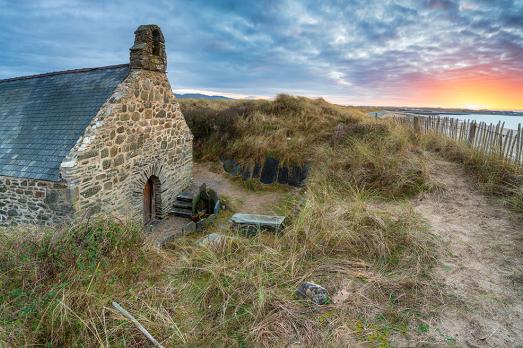
The Coastal Way
Unmissable churches and chapels along the Coastal Way.
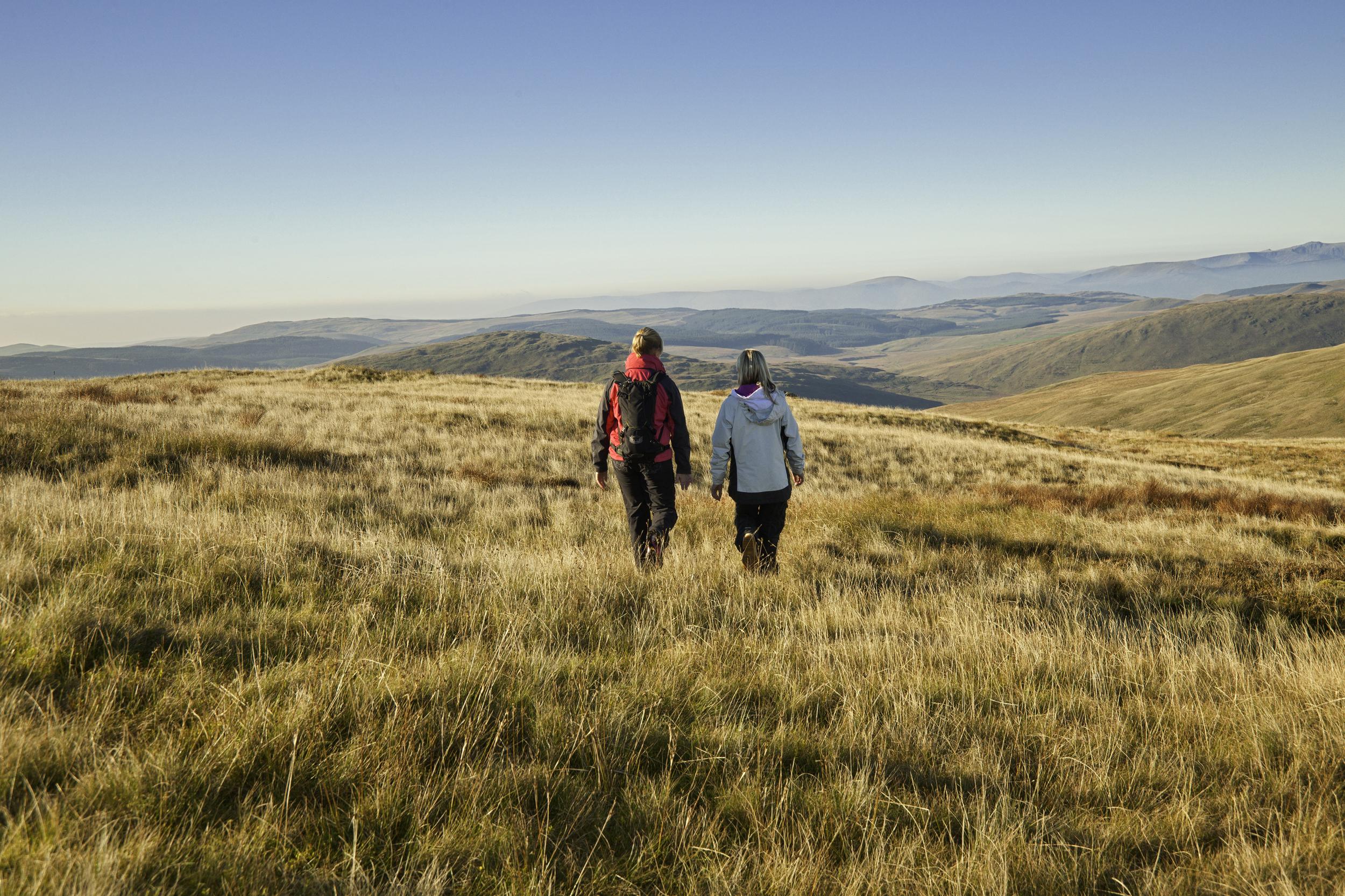
From Cardiff to the Great Orme, from the Valleys to the Welsh Riviera; take the back roads down the mountainous spine of Wales to discover churches to inspire and delight with an incredible range of art and architecture unsurpassed in the UK.
From timeless simple out of the way chapels to picturesque town churches with a warm welcome. We will travel to the oldest unaltered non conformist place of worship in Wales, admire medieval glass and carved screens painted ox blood red, look up at angel roofs, and be wowed by Victorian Arts & Crafts splendour and bold modern art.
This is 185 miles (300km) of mountains, valleys and classic Welsh landscapes. Passing through 3 national parks, multiple forests, traffic free long distance trails and a coastal path. If you don't fancy a road trip, why not take on Wales most scenically beautiful and challenging long distance trail. You can do the whole thing by horseback, bike or foot, just follow the long distance trails from Visit Wales.
Here’s our top pick of sacred places on the Cambrian way.
Scroll down to discover their stories, a map and a playlist for your trip.
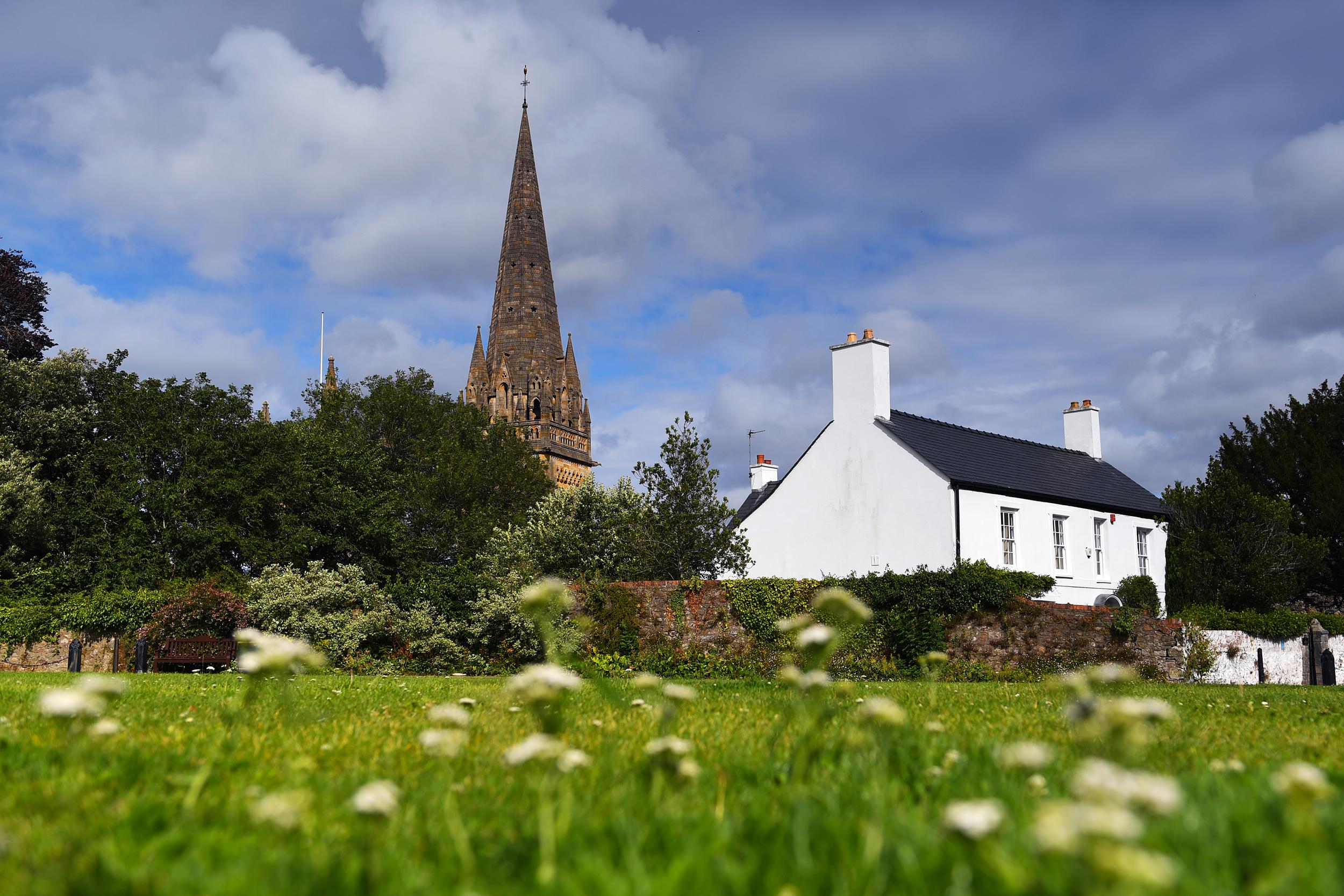
©CrownCopyright2020
A church has stood on this site since the 12th century, but the cathedral it grew into was severely damaged in WWII. The building you see today feels intensely modern in character and boasts a number of incredible works of art. Dominating the interior is the huge sculpture of Christ in Majesty by Sir Jacob Epstein, raised above the nave on a concrete arch designed by the architect of the renewal, George Pace.
Every inch of design here is carefully thought through and executed, from the simple railings to the way light filters through the windows in the Welch Regiment memorial chapel. When you visit you might be lucky enough to hear the organ stirring or the choir practising, for this is the church with the only dedicated choir school in the Church in Wales!
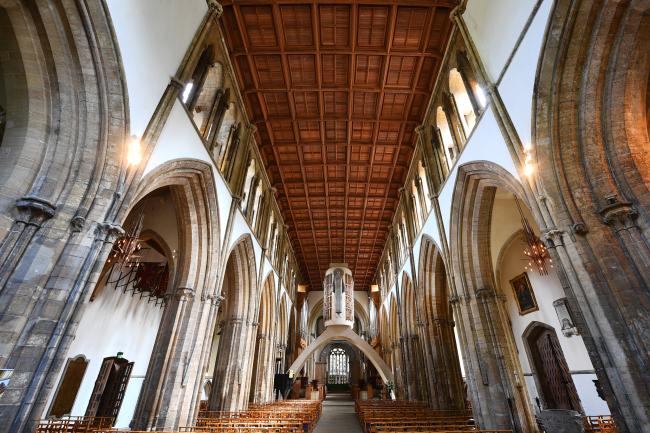
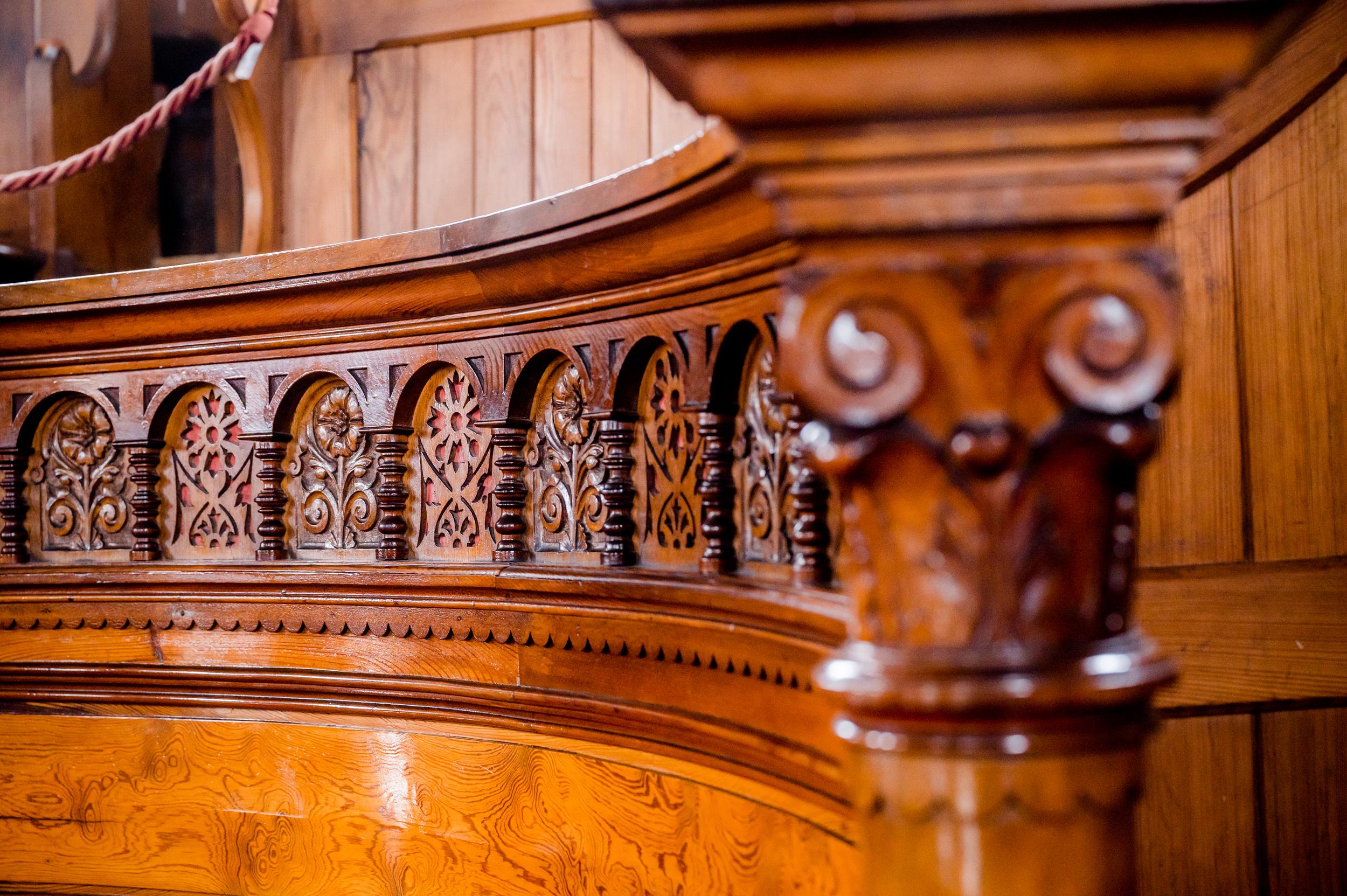
Plough Chapel in Brecon is a time capsule; with its beautifully constructed interior, fine detailing and incredible auditorium qualities. This is chapel architecture and some! We love the numbered pews. A friendly welcome is guaranteed here, and a tour followed by a Welsh tea with chapel members is a must.
From Brecon, a short detour along the well travelled A40 take you up to another Nonconformist gem.
Beili Du at Pentre-bach is a surviving 'long wall' chapel, like so many in Wales, serving a remote rural community. Its timber joinery is finished in painted imitation graining is typical of its date. It was first built in 1800, to serve the local Calvinistic Methodists of this part of Breconshire; where it was well used by student preachers attending the College of the denomination at Trefeca.
The members here were originally Welsh speaking, but eventually English predominated, in line with linguistic change across many areas of south and mid Wales. Victorian fashion has barely touched the interior, which remains evocative of chapel piety quiet atmosphere today. It is now in the safe hands of Addoldai Cymru.
From one chapel preserved in perpetuity to a church in a similar state!
13th century St Ellyw Llanelieu is remote, on the other side of the Cambrian Way deep in the Black Mountains of the Brecon Beacons National Park. The church is made famous by the 14th century timber screen which dominates the interior and retains traces of ox blood red paint. Even though the church is formerly closed, it’s still, as places of worship are, very dear to local people’s hearts. It's often used for meetings and a candlelight concerts.
The other claim to fame the church has is featuring in Andy McNab’s book 'Fervala' (2005) where he says: 'God no longer pays St Ellyw's formal visits, even on Sundays and I wanted to see if the loft was still painted blood red'. It is!
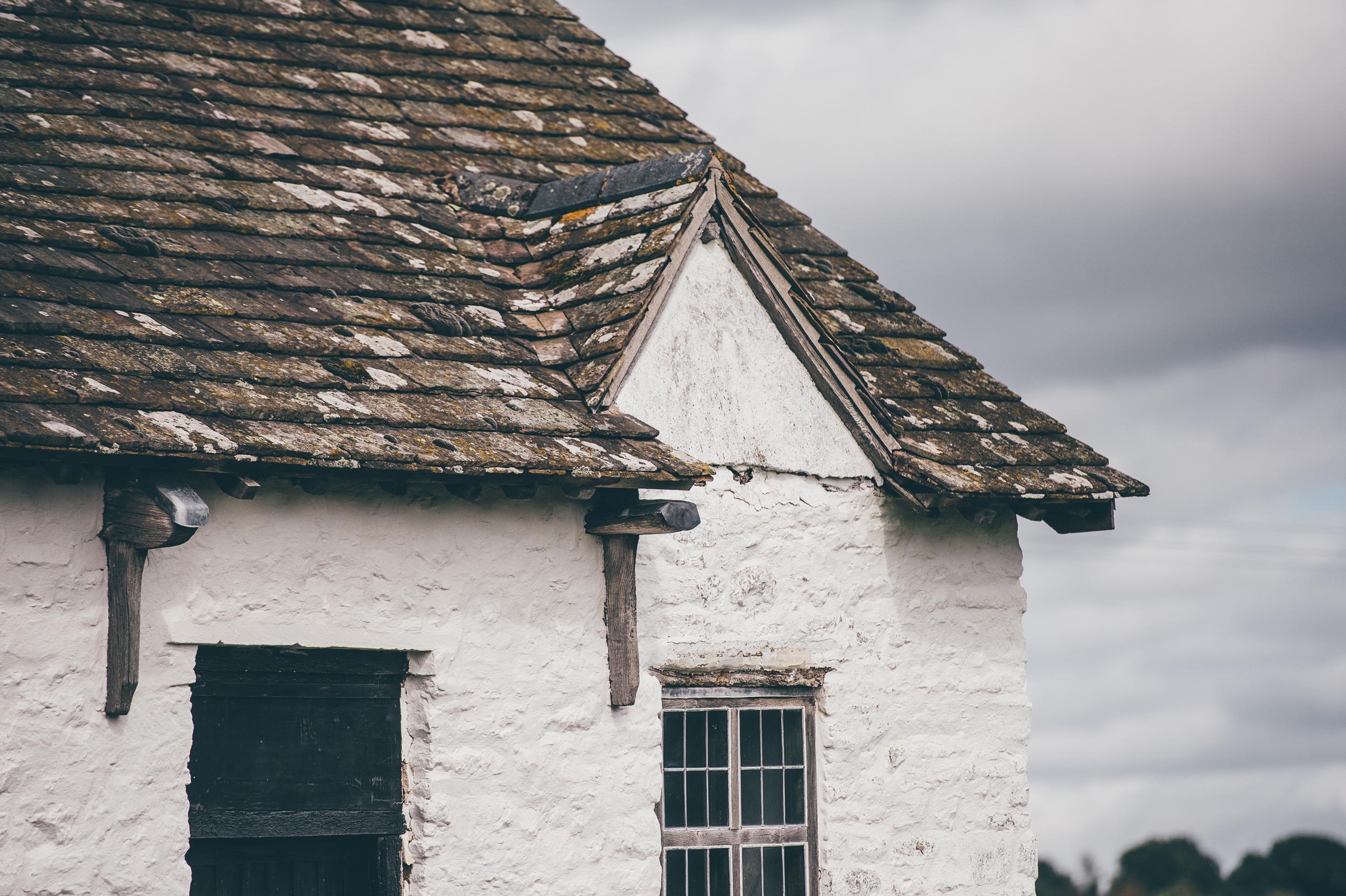
©CrownCopyright2020
You really must not miss Maesyronnen Chapel at Glasbury on Wye. In fact you can’t get a chapel much older than Maesyronnen.
William & Mary passed the Act of Toleration allowing non conformist worship in 1689 as part of their 'glorious revolution' and the chapel was registered for worship in nearby Presteigne only eight years later in 1697. There had been clandestine meetings in secluded farmhouses and buildings across the area before then, dating from the middle of the 1600s after dissenters and nonconformists split from the established church and their movement 'spread like wildfire' across the hills and mountains of South Wales. This was despite the threat of violence, imprisonment or even worse and goes someway to explain the chapel’s secluded location.
The chapel you see today is unique as it is largely unaltered from the day it was built, full of character. We love that in 2020 this ancient chapel has also embraced online services, with attendees from as far afield as Dorset. It’s clear to see why this place inspires such love!
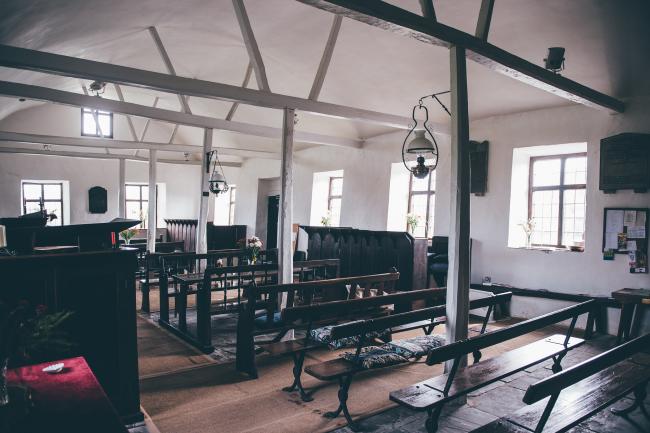
Deep into mid Wales now, and this area has some truly amazing and little known churches with incredible fittings to match.
A short detour off the Cambrian Way is St Anno Llananno, open daily, with its fabulous carved medieval screen. A true work of art with vines and fruit and flowers all carved and entwining, you’ll need to sit down to take it all in. This place inspired RS Thomas to write a poem about it which hangs on the church wall; with so much history and beauty it’s good to know Llananno is another now safe in the care of the Friends of Friendless Churches.
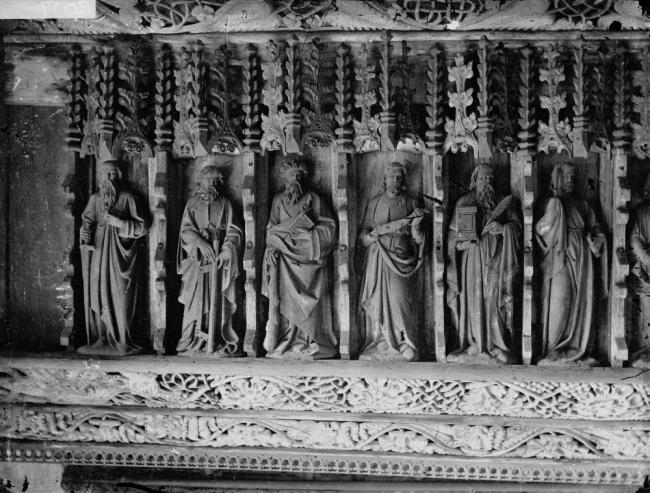
Further on you will find St Idloes Llanidloes, with its substantial 14th century tower and sweet pyramid roof. This is the only church in Wales dedicated to St Idloes, an obscure 7th century saint whose feast is celebrated on 6th September.
Here too visitors can wow at the last ‘angel roof’ in Wales. The fantastic roof arches here came originally from Abbey at Cwmhir after it was dissolved in 1536 and 20 carved angels can be spotted high up there. Don’t miss the gorgeous modern stained glass, donated by Mr and Mrs Gerald Hamer in memory of their parents. The centrepiece represents the chaos that existed before creation, surrounded by flora and fauna, including the donors St Bernard dog!
If you fancy a slight detour, we definitely recommend Pentre Llifior Chapel, a charming 18th century wayside Wesleyan chapel established by Revd James Buckley (of 'The Revd James' ale fame) and Revd James Gill, later missionary to Gibraltar. It's featured in TJ Hughes's 'Wales's Best One Hundred Churches' and is often open and serving refreshments so is well worth a visit.
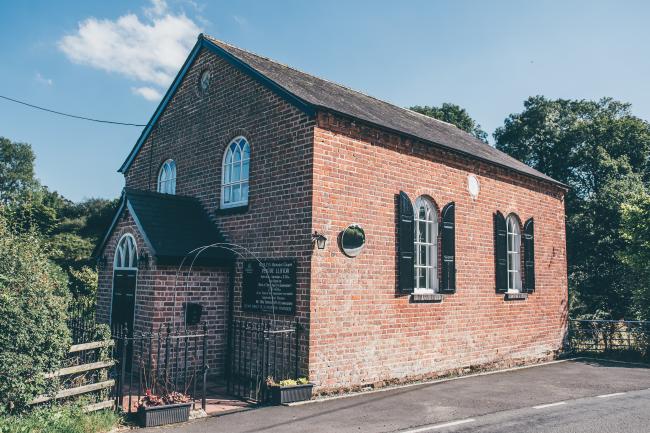
Art lovers should now make a beeline for St Mark Brithdir, just outside Dolgellau. A treasure house of art and architecture, tucked away from the main road in a rambling churchyard managed for wildlife.
Designed by Arts & Crafts architect Henry Wilson in the late 19th century it instantly transports the visitor to the Mediterranean. The interior décor is of terracotta orange and blue, and fine fittings include an exquisite font by WR Lethaby and carved choir stalls in Spanish chestnut featuring a hare, a tortoise, an owl, a bunny and a squirrels. We love the low slung cat slide roof and bold composition of the exterior; and and all the details, like the hearts in the leaded glass and the gutter detailing.
If you are quiet and patient you may spot the barn owls peeking out of the high east end windows.
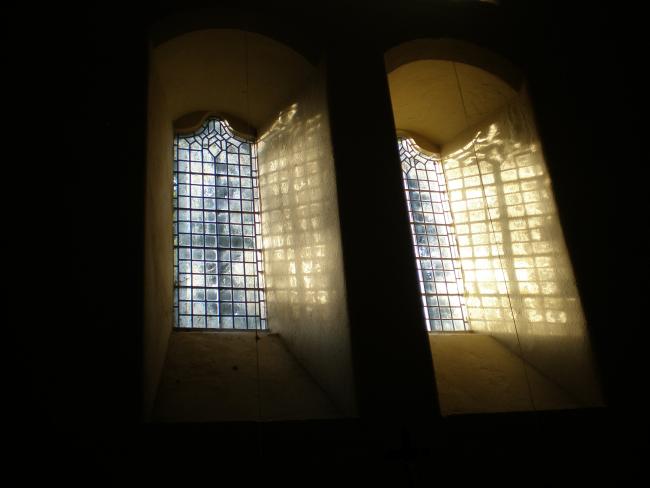
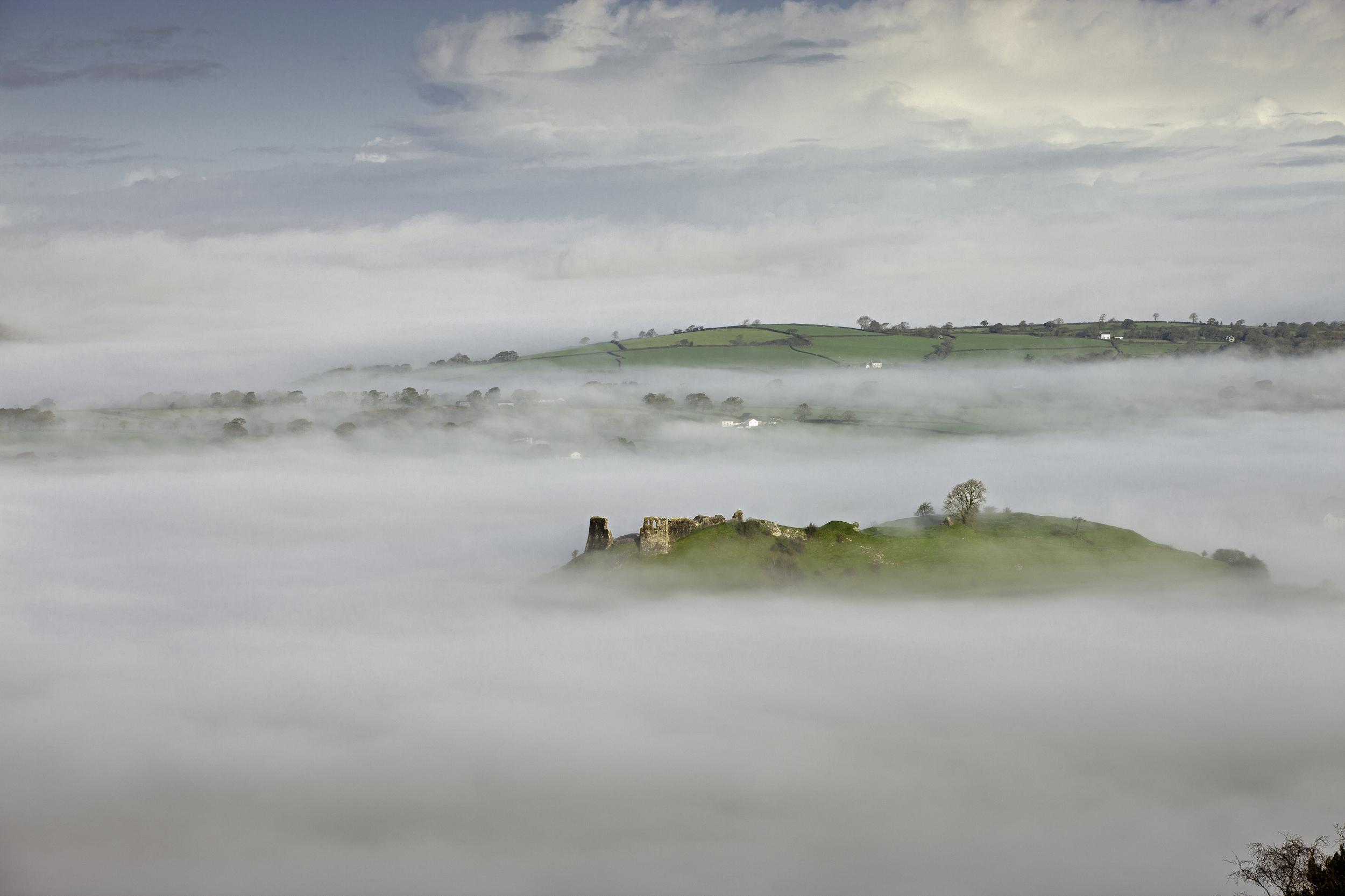
©CrownCopyright2020
People talk of 'thin places' where the gap between heaven and earth narrow. Remote and atmospheric St Rhychwyn Llanrhchwyn undoubtedly has this quality.
Best reached by foot, as pilgrims have encountered it for centuries, it's a typical Welsh upland church, squat, sturdy and double naved, looking as though it has grown out of the bones of the hills. Inside survives some incredible, glowing medieval stained glass. Notice the sorrowful bearded God the Father holding a crucifix with his dying son on his knees. Over his breast hovers the dove of the Holy Spirit, and in the surrounding glass are fragments from the story of Christ’s childhood. The picture of Christ as a baby in his mother’s arms is particularly appealing, all tiny outstretched hands and feet.
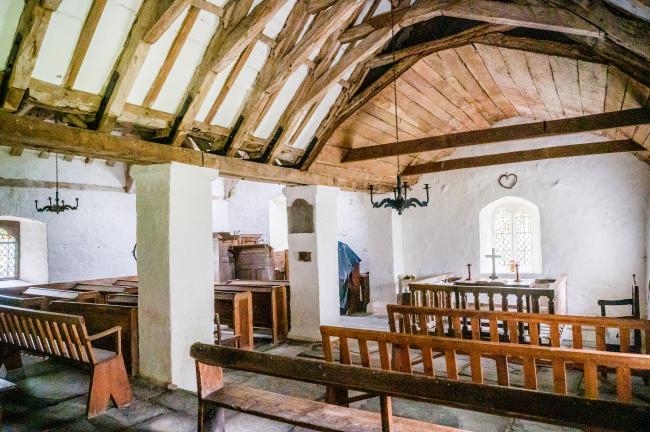
And just a stonesthrow from here is St Gwrst Llanwrst, a large and ancient town church with another warm welcome, just off the main town square.
Dating from the 15th century and restored in the 19th by Lancashire architects Paley & Austin, this is another place to admire the wonderful medieval rood screens of Wales. Here the screen is complete with a loft, in 12 bays (sections) with elaborately carved tracery and pigs eating acorns!
Don’t miss the 17th century chapel, probably designed by Inigo Jones, of Covent Garden market fame, and the 13th century stone coffin; said to be that of Llywelyn the Great, the first prince of Wales.
Into the tip of North Wales now.
Nestling on the banks of the Afon Conwy, with fine views of the Carneddau mountains, St Mary Caerhun is another of the medieval gems of the Conwy Valley.
You can still see the signs of the Roman fort ‘Canovium’ that it was built on top of, together with the remains of the bath house down by the river. Can you spot red sandstone blocks in the walls? They may have been reused from the roman site. Inside, notice the 14th or 15th century arch braced collar roof , this used to be painted red and sprinkled with white stars. In the churchyard look out for the rare hawfinches and red kites overhead with their distinctive forked tail and long whistling calls.
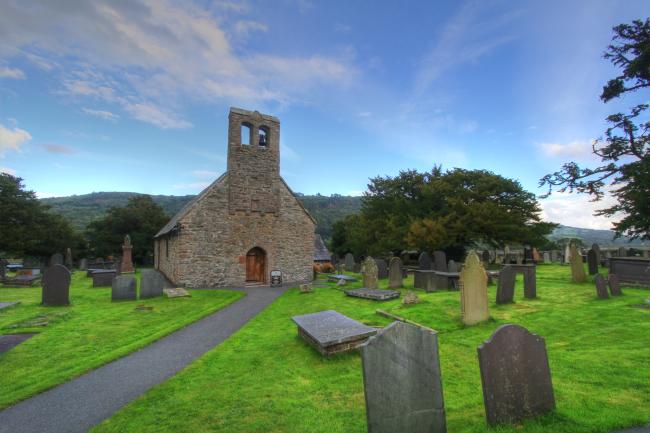
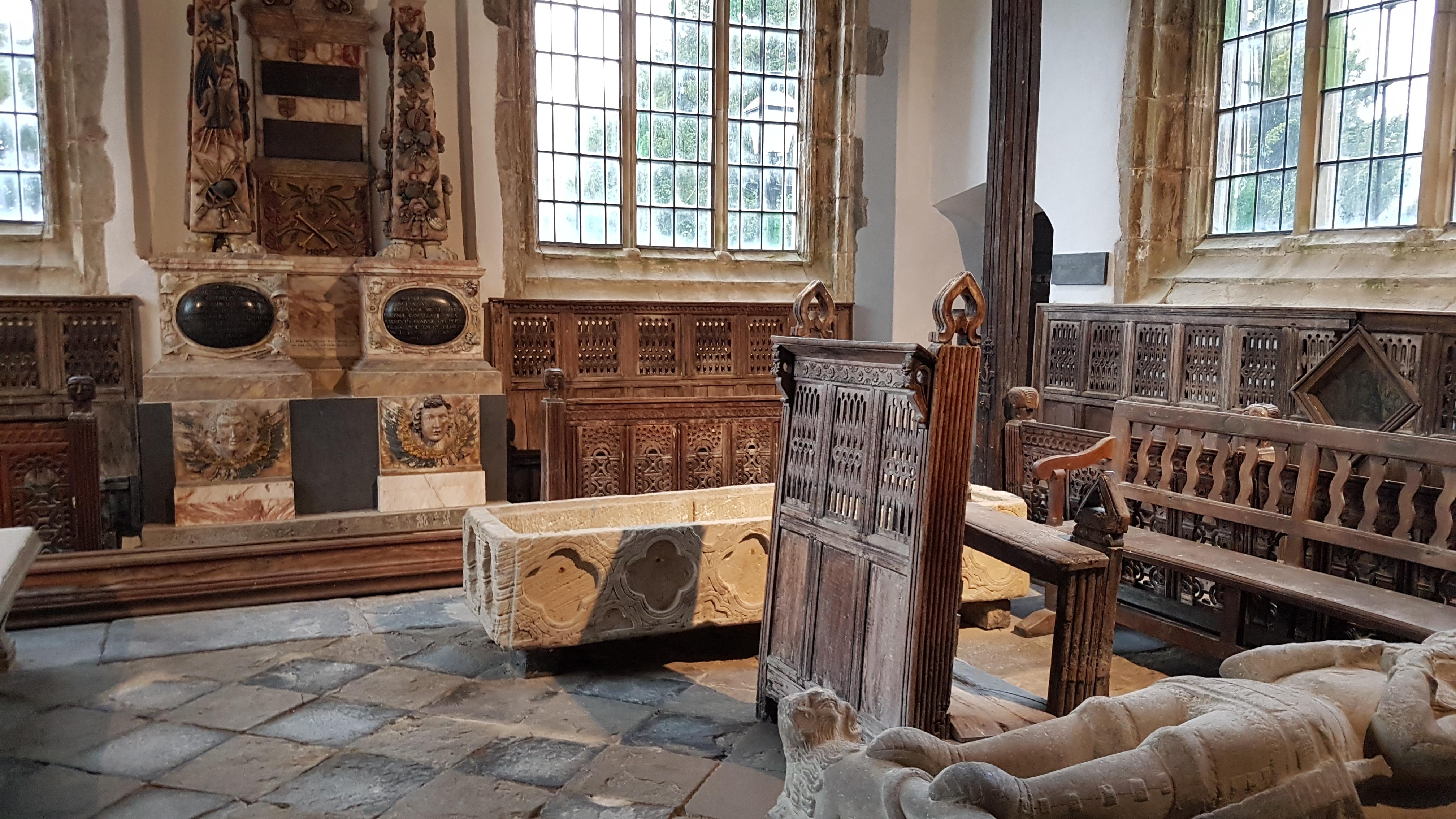
JonRichmond
Just off the Cambrian Way, to the east, is a tiny, plain stone roofed building. About 11 feet by 8 feet, with walls two feet thick and seats for just six people, St Trillo Rhos on Sea is possibly the smallest church in Britain.
Dating from the early 16th century, the chapel is dedicated to St Trillo, an early saint from the 6th century. The altar stands over a natural spring, thought to have been an ancient holy well, from which water has been used for baptisms in the parish.
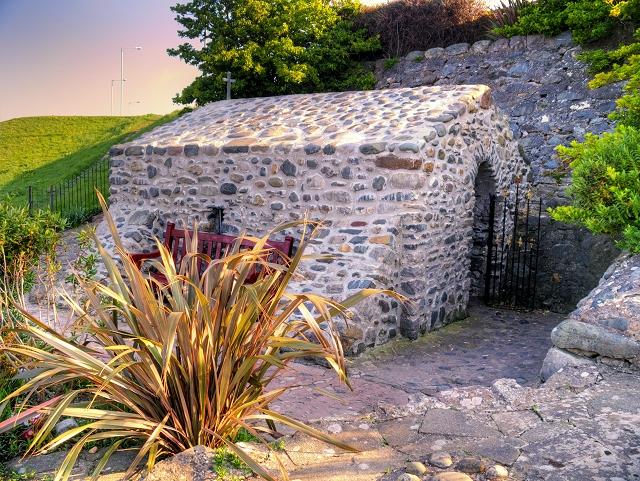
Finally, where better to stop, for now, than at St Tudno, so perfectly sited on the Great Orme.
A Celtic missionary who established a cell here sometime during the reign of Maelgwyn Gwynedd, known as the King of Gwynedd (490-549), St Tudno first inhabited a cave and then made an enclosure or llan.
The church we see today has been dated to the 12th century, with much of the fabric rebuilt over the centuries. The roof was badly damaged in 1839 during a massive storm and instead of repairing St Tudno’s, a new church was built nearer the centre of the population in the wonderful Victorian seaside resort of Llandudno.
Old St Tudno’s was abandoned until an appeal was made for public subscriptions to repair the roof. A full restoration was completed in 1855 and today outdoor services in the summer are popular, conducted from a stone pulpit erected in the churchyard in 1914.
You can walk, drive take the tramway or cable car up the Orme. Then walk down to the church, take a seat on the grass and enjoy the view at this fitting place to end our Cambrian Tour.
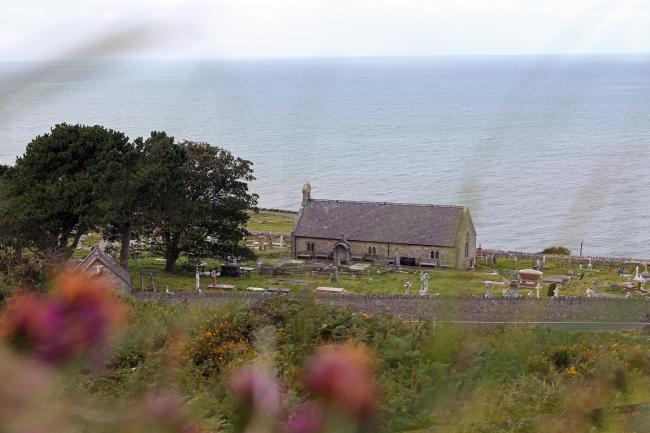
All the hits from the land of song.
A huge 4.5 hours of music collated by Spotify.
©CrownCopyright2020
The Wales Way is a family of three national routes that lead visitors along the west coast, across north Wales, and through Wales mountainous heartland. The routes highlight unmissable attractions and uniquely Welsh experiences along the way: natural wonders, landmarks, towns, galleries and museums.
Walk, cycle, ride or drive. You'll explore incredible scenery, eat wonderful food and discover amazing stories.
With amazing churches, chapels and meeting houses along the way.

Unmissable churches and chapels along the Coastal Way.
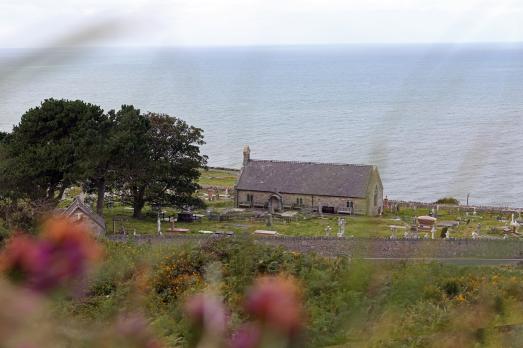
Unmissable churches and chapels along the North Wales Way.
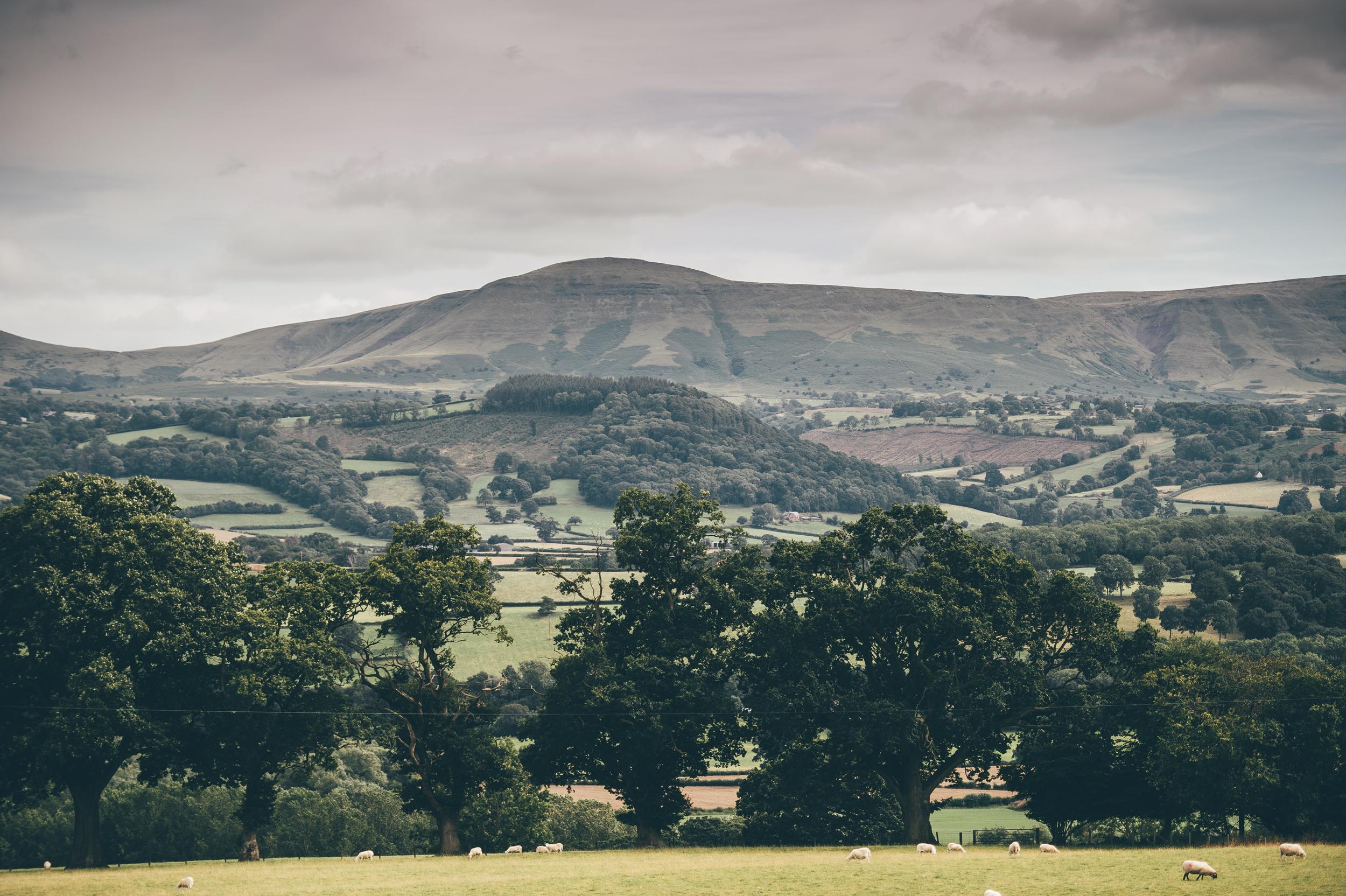
©CrownCopyright2020
©CrownCopyright2020